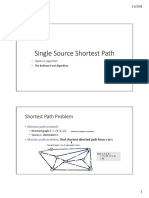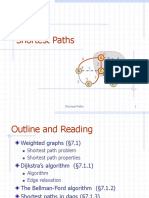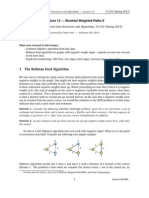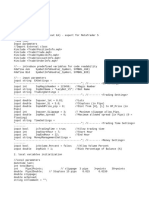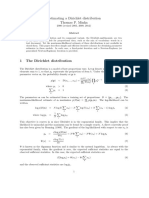0% found this document useful (0 votes)
139 views22 pagesShortest Paths Algorithms - I
The document discusses algorithms for finding the shortest path between two vertices (nodes) in a graph. It first discusses Dijkstra's algorithm for finding shortest paths in weighted directed graphs. However, Dijkstra's algorithm does not work for graphs with negative edge weights, as the shortest path could traverse a negative cost cycle. The document then introduces the Bellman-Ford algorithm, which can handle graphs with negative edge weights by detecting negative cost cycles. It provides an example application of Bellman-Ford and notes that detecting a negative cost cycle is possible using Bellman-Ford by checking for a distance decrease on the final iteration.
Uploaded by
Aaryan S VermaCopyright
© © All Rights Reserved
We take content rights seriously. If you suspect this is your content, claim it here.
Available Formats
Download as PDF, TXT or read online on Scribd
0% found this document useful (0 votes)
139 views22 pagesShortest Paths Algorithms - I
The document discusses algorithms for finding the shortest path between two vertices (nodes) in a graph. It first discusses Dijkstra's algorithm for finding shortest paths in weighted directed graphs. However, Dijkstra's algorithm does not work for graphs with negative edge weights, as the shortest path could traverse a negative cost cycle. The document then introduces the Bellman-Ford algorithm, which can handle graphs with negative edge weights by detecting negative cost cycles. It provides an example application of Bellman-Ford and notes that detecting a negative cost cycle is possible using Bellman-Ford by checking for a distance decrease on the final iteration.
Uploaded by
Aaryan S VermaCopyright
© © All Rights Reserved
We take content rights seriously. If you suspect this is your content, claim it here.
Available Formats
Download as PDF, TXT or read online on Scribd
/ 22





